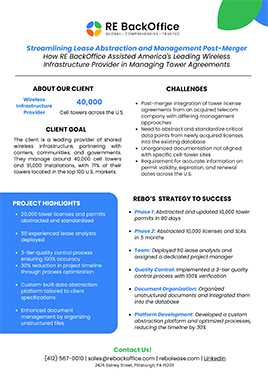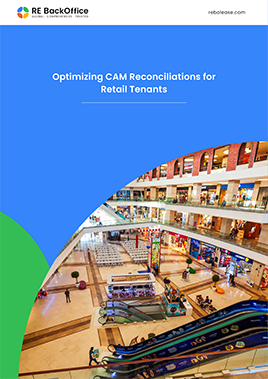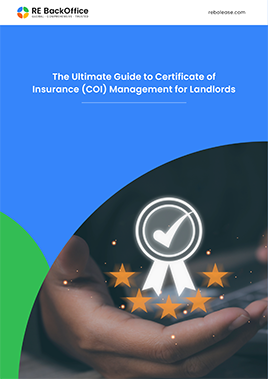
Common Area Maintenance (CAM) reconciliation is a critical process in commercial lease management that ensures landlords recover shared property expenses accurately while tenants pay their fair share. However, CAM reconciliation can be complex, involving detailed expense tracking, allocation calculations, and compliance with lease agreements.
Properly managing CAM reconciliation helps prevent disputes, improves financial transparency, and enhances tenant-landlord relationships. In this guide, we'll explore the best practices for CAM reconciliation, covering key processes such as expense categorization, budgeting, auditing, automation, and communication strategies.
Understanding CAM Reconciliation
CAM charges cover the costs of maintaining shared spaces in commercial properties, such as parking lots, hallways, landscaping, security, and other common areas. Landlords typically estimate CAM expenses at the beginning of the year and reconcile them at the end, adjusting tenant payments based on actual costs incurred.
Key Components of CAM Reconciliation
- Estimated vs. Actual Expenses: Comparing projected CAM costs with actual year-end expenses
- Expense Categorization: Identifying recoverable vs. non-recoverable expenses
- Lease Agreement Compliance: Ensuring cost allocation aligns with lease terms
- Tenant Expense Allocation: Fairly distributing expenses among tenants
- Audit and Dispute Resolution: Reviewing expenses for accuracy and addressing tenant concerns
Proper CAM reconciliation prevents overbilling, ensures compliance, and fosters transparency between property owners and tenants.
Best Practices for CAM Reconciliation
1. Establishing Clear and Transparent CAM Budgeting
A well-structured CAM budget helps both landlords and tenants anticipate expenses and avoid surprises during reconciliation. Proper forecasting ensures financial accuracy and prevents disputes.
Best Practices for CAM Budgeting:
- Use historical data to estimate future CAM expenses accurately
- Account for inflation and market trends when setting estimates
- Clearly define recoverable and non-recoverable expenses in lease agreements
- Communicate budget projections with tenants in advance to set expectations
By maintaining transparency in CAM budgeting, landlords can build trust with tenants and streamline the reconciliation process.
2. Categorizing CAM Expenses Properly
Not all expenses qualify for CAM recovery, and improper categorization can lead to disputes. Landlords must clearly differentiate between recoverable and non-recoverable expenses to ensure fair cost distribution.
Best Practices for Expense Categorization:
- Define recoverable expenses (e.g., security, landscaping, janitorial services)
- Exclude non-recoverable costs (e.g., capital improvements, legal fees, property taxes)
- Ensure expense categories align with lease agreements
- Regularly review and update cost classifications to reflect operational changes
A standardized expense categorization system minimizes disputes and improves billing accuracy.
3. Implementing Accurate Expense Tracking and Record-Keeping
Proper documentation is essential for justifying CAM expenses and ensuring a smooth reconciliation process. Without accurate records, landlords may face tenant disputes and compliance risks.
Best Practices for Expense Tracking:
- Maintain detailed invoices and receipts for all CAM-related expenses
- Use property management software to track expenses in real time
- Categorize costs by property and expense type for clarity
- Perform periodic audits to verify expense accuracy
By keeping meticulous records, landlords can demonstrate transparency and resolve disputes efficiently.
4. Conducting Regular CAM Audits to Ensure Accuracy
Errors in CAM calculations can lead to overcharges or under-recoveries, affecting both landlords and tenants. Regular audits help identify discrepancies and ensure fair billing.
Best Practices for CAM Audits:
- Perform internal audits before sending reconciliation statements to tenants
- Compare expenses against lease terms to verify cost eligibility
- Ensure all expenses are properly allocated among tenants
- Allow tenants to request audits and provide supporting documentation
A proactive audit process reduces errors, prevents disputes, and enhances financial accuracy.
5. Automating CAM Reconciliation for Efficiency and Accuracy
Manual CAM reconciliation processes are time-consuming and prone to human errors. Implementing automated systems can streamline calculations, improve accuracy, and save time.
Best Practices for Automation:
- Use lease management software with built-in CAM reconciliation tools
- Automate expense allocation to tenants based on lease terms
- Generate reconciliation reports automatically to ensure transparency
- Integrate accounting systems for real-time expense tracking
Automation reduces administrative workload, improves accuracy, and ensures timely reconciliation.
6. Communicating Clearly with Tenants to Minimize Disputes
Lack of communication is a leading cause of CAM disputes. Providing tenants with clear, detailed reconciliation statements fosters trust and prevents conflicts.
Best Practices for Tenant Communication:
- Provide detailed breakdowns of CAM expenses in reconciliation reports
- Schedule review meetings to explain CAM charges to tenants
- Address tenant concerns promptly and provide supporting documentation
- Maintain an open dialogue throughout the lease term to manage expectations
Transparent communication builds strong landlord-tenant relationships and minimizes disputes.
7. Establishing Fair and Consistent Expense Allocation Methods
Fair allocation of CAM expenses ensures that tenants pay their rightful share based on lease agreements. Discrepancies in allocation can lead to financial disputes and legal challenges.
Best Practices for Expense Allocation:
- Use pro-rata share calculations based on tenant square footage
- Clearly define allocation methods in lease agreements
- Adjust allocations for anchor tenants or special lease provisions
- Regularly review and update allocation methods to maintain fairness
A standardized allocation approach ensures consistency and reduces tenant disagreements.
8. Ensuring Compliance with Lease Terms and Regulations
CAM reconciliation must align with lease agreements and legal regulations to avoid disputes and potential litigation.
Best Practices for Compliance:
- Review lease agreements regularly to ensure CAM charges align with contract terms
- Stay updated on local laws governing CAM expenses and recoveries
- Document compliance measures for transparency and legal protection
- Seek legal review of CAM policies to prevent contractual violations
Ensuring compliance protects landlords from legal risks and strengthens tenant confidence.
9. Handling CAM Disputes Professionally and Efficiently
Despite best efforts, CAM disputes may arise. Having a structured resolution process ensures conflicts are handled fairly and efficiently.
Best Practices for Dispute Resolution:
- Maintain clear documentation to support expense claims
- Offer an open review process for tenant concerns
- Engage third-party auditors if disputes escalate
- Negotiate solutions amicably to maintain positive tenant relationships
A structured dispute resolution process prevents conflicts from escalating and maintains business integrity.
Effective CAM reconciliation is a key component of commercial lease management, ensuring landlords recover costs accurately while maintaining fairness for tenants. By implementing best practices—such as transparent budgeting, meticulous expense tracking, regular audits, automation, and clear tenant communication—property managers can enhance financial accuracy, minimize disputes, and foster positive tenant relationships.
A well-structured CAM reconciliation process not only ensures compliance with lease agreements but also helps property owners maintain operational efficiency and profitability. Leveraging technology and automation further reduces errors and administrative burdens, allowing teams to focus on strategic lease management.
By staying proactive in CAM reconciliation, landlords can prevent financial discrepancies, build tenant trust, and ensure sustainable lease operations. Adopting these best practices today will lead to greater transparency, reduced risk, and long-term success in property management.


